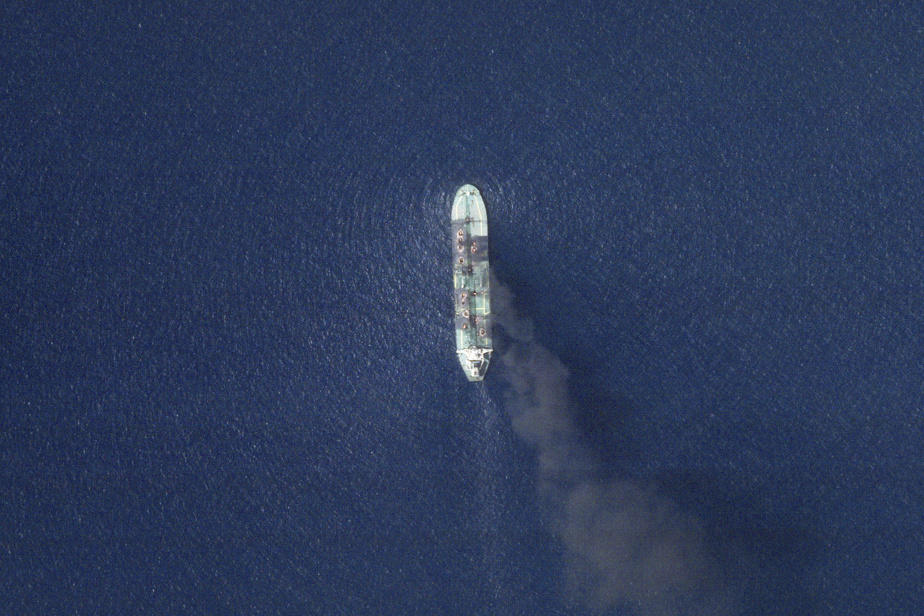(Dubai) An oil tanker attacked by Yemeni Houthi rebels and abandoned off the coast of Yemen, with more than a million barrels of crude oil on board, could cause an “environmental catastrophe” in the Red Sea if it breaks up or explodes, experts warn.
Hit by missiles last month, the Greek-flagged Sounion was still on fire Saturday, raising the risk of an oil spill four times larger than that caused by the Exxon Valdez in 1989 off the coast of Alaska.
“A spill of this magnitude could be virtually impossible to contain, contaminating vast areas of seawater and coastline,” warns Julien Jreissati, Greenpeace’s Middle East and North Africa programme director. “The long-term impacts on marine biodiversity could be devastating, with oil residues potentially lingering in the environment for years or even decades.”
The Houthis, who control large swathes of Yemen, have for months targeted ships they believe are linked to Israel, the United States or the United Kingdom, saying they are acting in solidarity with Palestinians in the Gaza Strip, in the context of the war between Israel and the Palestinian Islamist movement Hamas.
The Sounion, which is carrying 150,000 tonnes of crude oil, caught fire and lost power after being attacked on 21 August. Its 25 crew members were evacuated the following day by a French frigate from the European Aspides mission, deployed in the area.
Days later, rebels claimed to have detonated charges on the ship’s deck, sparking further fires.
“Unpredictable” situation
Private companies that were to tow the ship, anchored halfway between Yemen and Eritrea, decided it was “not safe” to do so, the Aspides mission, tasked with ensuring their protection, announced last week, saying that “alternative solutions” were being studied.
With the tanker “heavily laden, immobilized and on fire, the situation is extremely dangerous and unpredictable,” Jreissati said. “The risk of a major environmental disaster is significant, as the ship could break up or explode at any time,” he added.
Since November, Houthi attacks have killed at least four crew members and sunk two ships, including the Rubymar, a bulk carrier that sank in March with thousands of tons of fertilizer on board.
The Sounion, however, poses the greatest threat to date. “This situation is an environmental catastrophe that is slowly unfolding before our eyes,” says Wim Zwijnenburg of the NGO PAX, which works for world peace.
The Joint Maritime Information Center (JMIC), run by a multinational naval coalition that includes the United States and European countries, reported “several” fires on the ship’s deck on Saturday, saying it had not seen any oil spill. It said a rescue and firefighting operation was expected to begin this week.
“Small oil slicks have been detected on some satellite images, probably related to burnt oil after the explosions or from the engine,” says Zwijnenburg. But there is no indication at this stage “that there was a spill of crude oil from the cargo carried by the ship.”
“Risky environment”
The threat of the Sounion in the Red Sea recalls the risk long posed by the supertanker FSO Safer, a 47-year-old oil tanker abandoned for years off the coast of Yemen, due to the civil war that has torn the poor country apart for more than a decade.
In August 2023, the United Nations successfully transferred its cargo of more than a million barrels of oil after a long and costly operation.
Saving the Sounion could prove all the more difficult as the Houthi rebels continue their attacks in the area, underlines Noam Raydan, of the Washington Institute for Near East Policy.
“Finding suitable tugs nearby, ready to operate in such a risky environment, can be difficult,” the expert says. And naval forces “will have to stay close to the tanker to prevent the Houthis from interrupting the (rescue) process.”
